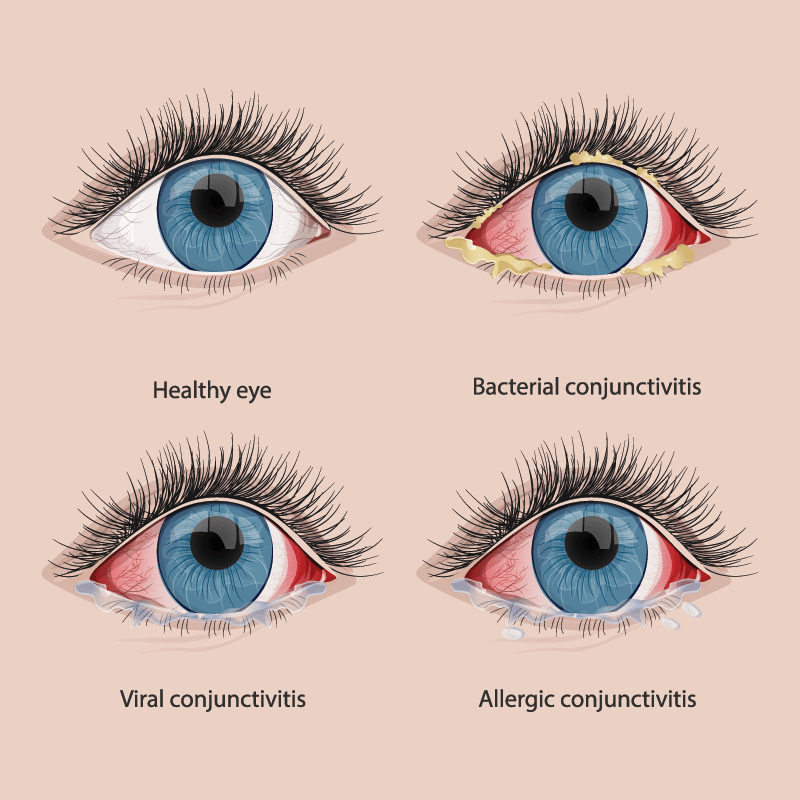Things you need to know about 5 types of conjunctivitis:
Conjunctivitis, commonly known as “eye flu,” is spreading in India and around the world. It affects the conjunctiva, a thin, transparent layer covering the white part of the eye and the inside of the eyelids. Eye flu is highly contagious and can spread rapidly, particularly in crowded places and among children. We have recently come across five types of conjunctivitis commonly seen in India. Read below to know more about them:
Viral Conjunctivitis:
The most prevalent form of conjunctivitis is viral conjunctivitis, which results from a virus, often the same one responsible for the common cold. It spreads easily through direct contact with an infected person or by touching surfaces contaminated with the virus. Common symptoms include redness, watery discharge, itchiness, and sensitivity to light. Viral conjunctivitis typically resolves on its own within 1 to 3 weeks, as there is no specific treatment for it. However, relief from symptoms can be attained using lubricating eye drops and cold compresses.
Bacterial Conjunctivitis:
Bacterial conjunctivitis results from bacterial infection and is distinguished by redness in the eyes, sticky discharge, and a gritty feeling. The infection can spread through direct contact or by sharing personal items with an infected person. The usual treatment for bacterial conjunctivitis involves prescribed antibiotic eye drops or ointments. To prevent recurrence and antibiotic resistance, it is essential to complete the full course of antibiotics.

Allergic Conjunctivitis:
Allergic conjunctivitis occurs when allergens, such as pollen, dust mites, pet dander, or certain chemicals, trigger the condition. It is not contagious and typically affects both eyes. Symptoms include intense itching, redness, and excessive tearing.
Chemical Conjunctivitis:
Chemical conjunctivitis arises from exposure to irritants or chemicals, like chlorine in swimming pools, smoke, or cleaning agents. It can also result from accidental splashes of hazardous substances. Symptoms include severe eye redness, pain, and watery discharge. In such situations, immediate flushing of the eyes with clean water is crucial. Seeking prompt medical attention is essential.

Giant Papillary Conjunctivitis (GPC):
GPC is a less common type of conjunctivitis characterized by the formation of large bumps (papillae) on the inner surface of the eyelids. Prolonged use of contact lenses or ocular prosthetics is often associated with this condition. Symptoms include itching, redness, mucus discharge, and discomfort while wearing contact lenses. Treatment involves discontinuing lens wear and using prescribed eye drops to reduce inflammation.














